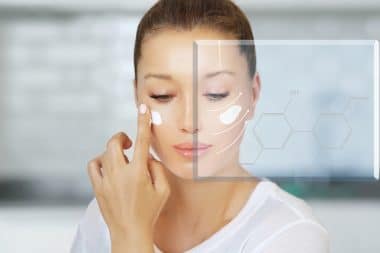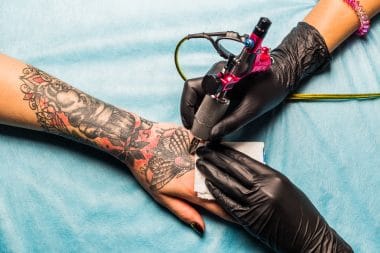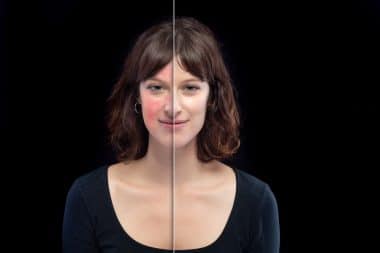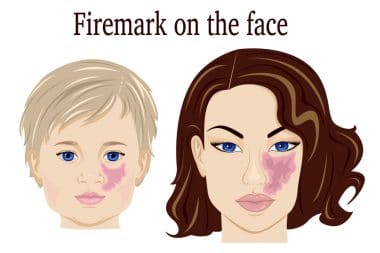Age spots and hyperpigmentation are common skin conditions that cause portions of skin to become noticeably darker. Sun exposure, overactive melanin production, hormonal fluctuations, and natural aging can all cause these discolored skin patches. While most of these spots occur in people over 40, they can pop up earlier for some individuals. Spots are most common in areas subject to the most sun exposure, like hands, feet, shoulders, upper back, and face. Fortunately, there are several effective strategies for addressing these dark spots and achieving a more even skin tone.
Pigment lives in the topmost layer of skin, known as the epidermis, so treatments need to penetrate this layer to be effective. However, correctly identifying age spots and hyperpigmentation is crucial for receiving proper treatment. A dermatologist or other healthcare professionals can distinguish the cause of your spots and prescribe the best course of action. Misidentifying a skin condition and using the wrong care plan may worsen issues. Here are six tips for treating age spots and hyperpigmentation.
1. Topicals
Topicals are one of the most accessible and effective treatments for discoloration. Topical treatments, such as creams, serums, and lotions, can be applied directly to the affected area. This allows for precise targeting of the discoloration without affecting surrounding areas, which is particularly beneficial for localized skin issues.
Many topical products for discoloration contain active ingredients that have been proven to address pigmentation issues. For example, hydroquinone is a go-to prescription-strength treatment for treating dark spots. This skin cream works by stopping the pigment-making process in the skin. Other topicals for treating hyperpigmentation include retinoids, azelaic acid, glycolic acid, corticosteroids, and salicylic acid.
Topical treatments can often be used in combination with other treatments, such as professional procedures or oral medications, to enhance results. This flexibility allows for a personalized approach to treating discoloration. However, it’s important to note that the effectiveness of topicals can vary. Depending on the individual, the specific cause of the discoloration, and the product’s formulation, some treatments work better than others. You may have to try a few.
2. Chemical Peel
If topicals aren’t doing the job, a more potent treatment like a chemical peel might be necessary. This process works by applying a chemical solution to shed the top layers of skin so newer, brighter skin can shine. Deeper, more intense treatments can also go down to the dermis, the middle layer of skin, to produce more drastic results.
While you can get some chemical peels over the counter, a professional-grade peel is likely your best bet. These treatments will be more powerful, therefore yielding more dramatic and quicker changes. As a result, side effects may be more intense, so speak with your dermatologist or esthetician about risk factors. The most common side effects of chemical peels are irritation, redness, and blistering. You’ll likely need a few days to recover after the treatment.
3. Dermabrasion
Dermabrasion is an effective way to shed layers of skin and reverse signs of discoloration. The process works by using a rapidly rotating brush to sand down the top layer of skin so a new layer can grow. The treatment may need to be done more than once for the best results. Side effects could be temporary redness, irritation, swelling, and scabbing.
If regular dermabrasion is too rough for your skin type, microdermabrasion might be a more suitable option. This minimally invasive procedure uses a special applicator with a rough surface to remove the top layer of skin gently. In addition to age spots, microdermabrasion helps improve the look of wrinkles and acne scars.
4. Laser Therapy
Laser resurfacing is another higher-intensity treatment for reducing hyperpigmentation. This type of therapy uses pulsing light to kill color-producing cells. The two types of laser therapy are ablative and non-ablative, and it’s important to understand the difference when deciding what’s best for you.
Ablative lasers are the more intense of the two therapies. This laser removes the outer layer of skin while heating the underlying skin to stimulate the production of collagen, which increases skin texture and firmness. A non-ablative laser is a less aggressive approach that also increases collagen production. While non-ablative lasers have a shorter recovery time because they’re less invasive, the results may be less noticeable.
5. Cryotherapy
Cryotherapy utilizes liquid nitrogen to freeze off unwanted spots on the skin. This use of extreme cold can treat conditions like discoloration, along with precancerous and cancerous cells. In addition to treating age spots and cancers, cryotherapy is a popular treatment for removing warts and skin tags.
The procedure is best for individuals with just a few discoloration patches. Cryotherapy isn’t a good fit for larger areas that need treatment. Cryotherapy also tends to work best on lighter skin complexions due to the risk of permanent discoloration for darker skin tones. The most reported side effects are numbness, redness, irritation, and tingling sensations. If that’s not something you want to risk, topical exfoliants may be a more gentle approach.
6. Take Precautions
While treatments for existing age spots are effective, the best thing you can do for your skin is to take precautions to protect it. These steps are especially crucial if you’re currently treating age spots and keeping cleared-up patches from returning. First, always be sure to wear mineral-based sunscreen with SPF 30 or higher daily.
You should also limit sun exposure in the afternoon, when the sun’s rays are strongest. Wear hats, long pants, and long sleeves whenever possible. Opt for clothing with an ultraviolet protection factor (UPF) rating of 40 or 50 during outdoor activities like hiking, boating, and gardening. Preventative measures can keep more dark spots from developing and stop your dark spots from worsening over time.
Unlocking Better Skin
Achieving a smoother and more even complexion is a common skincare goal, especially as people age. While age spots and hyperpigmentation might be prevalent, they don’t have to be permanent. From over-the-counter creams to more invasive therapies, there are a range of options for treating discoloration. Remember that consistency and patience are key, as results may take time before becoming noticeable and enhancing your natural beauty.









Reply